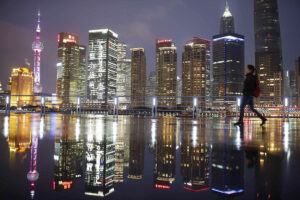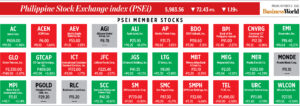High rates and inflation seen to hurt Asian banks

HIGH INTEREST RATES due to elevated inflation may negatively affect Asia and the Pacific (APAC) banks’ operating conditions in the medium term, an analyst said.
Banks may have profited from high rates, but this could only be a short-term gain, Standard Chartered Bank Chief Financial Officer in Asia Saleem Razvi said in a virtual conference hosted by S&P Global Ratings held on Wednesday.
“The reality is, in the medium term, this is not a good environment for banks to operate in. I’d rather we have lower interest rates — the economy be humming rather than be muted, banks would generally be healthier. There would be better sustainable growth,” he said.
The Bangko Sentral ng Pilipinas (BSP) raised its policy rate by 425 basis points (bps) to a near 16-year high of 6.25% from May 2022 to March 2023 to help bring down inflation, which was above 5% in that period, even peaking at 8.7% in January.
The BSP has since held borrowing costs for three straight meetings amid easing price pressures.
Inflation quickened for the first time in seven months in August to 5.3% from 4.7% in July. This also marked the 17th consecutive month that inflation surpassed the BSP’s 2-4% annual target.
The consumer price index averaged 6.6% in the first eight months, still above the central bank’s full-year forecast of 5.6%.
With inflation gradually easing, central banks are expected to lower rates eventually, which would put banks’ income “under pressure,” Mr. Razvi said.
“At the same time, cost spaces have gone up because of the accelerated inflation for the last two years, so banking profitability is going to be under pressure. We have to find a way of dealing with that,” he added.
The cumulative net income of the Philippine banking system grew by 24.7% to P178.51 billion in the first half from P143.12 billion in the same period in 2022, based on preliminary data from the BSP.
Net interest income stood at P414.45 billion in the January-to-June period, up by 16.9% from P354.32 billion a year prior.
“The other obvious consequence of this interest rate environment is when they’ve been so high for so long, there will be credit quality issues… Banks would have to be very watchful in dealing with that,” Mr. Razvi said.
The Philippine banking sector’s gross nonperforming loan (NPL) ratio was steady at 3.43% at end-July from a month ago, BSP data showed.
As of July, bad loans rose by 4.5% to P439.328 billion year on year.
The shift to digitalization will also affect APAC banks, Mr. Razvi said.
“It’s also an opportunity, frankly, and we’re seeing a lot more of this in the retail sector. But the reality is that you’re going to have traditional banking models disrupted, and you’re going to have the need for banks to evolve very quickly, very flexibly,” he said.
Banks will also need to adapt to climate change adaptation, he added.
“Banks clearly have a massive role to play in terms of marshalling that financing, making sure it goes in the right place but there’s no abuse, there’s no greenwashing,” Mr. Razvi said. — K.B. Ta-asan




